TENNESSEE MUSIC CRUISE 2020
September 20 - 28,
2020
Aboard American Duchess Riverboat
|
|
 |
|
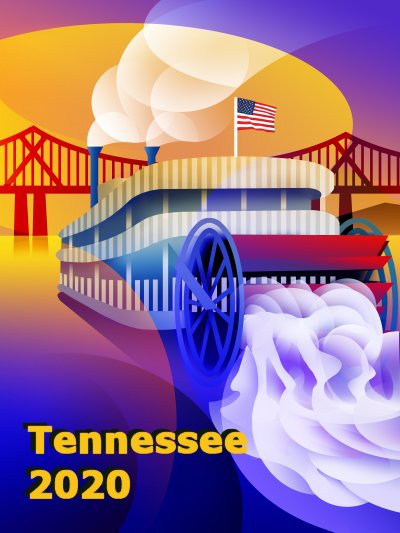 |
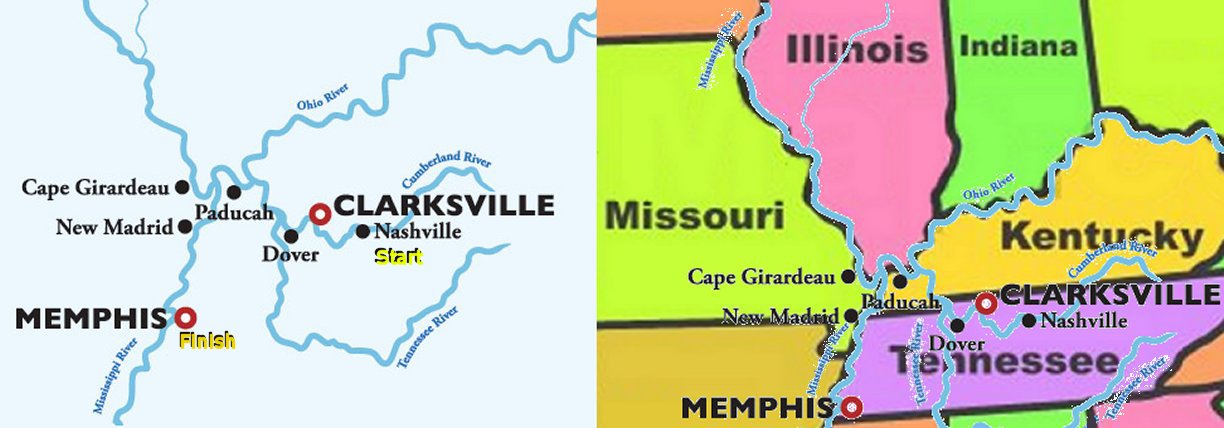
|
 |
|
2020
Tennessee Music Cruise Itinerary
|
|
September 20: Day
01
|
Sunday |
Gaylord
Opryland Resort, Nashville. |
|
September 21: Day
02
|
Monday |
Nashville
to Clarksville, Tennessee |
|
September 22: Day
03
|
Tuesday |
Clarksville, Tennessee |
|
September 23: Day
04 |
Wednesday |
Dover,
Tennessee |
|
September 24: Day
05
|
Thursday |
Paducah,
Kentucky |
|
September 25: Day
06
|
Friday |
Cape
Girardeau, Missouri |
|
September 26: Day
07
|
Saturday |
New
Madrid, Missouri |
|
September 27: Day
08
|
Sunday |
Cruising the
Mississippi |
|
September 28: Day
09
|
Monday |
Memphis,
Tennessee |
|
A Note from Marla Archer regarding the
Tennessee Music Cruise:
I would like to announce our
first ever American Music Themed River Cruise.
We sail from Nashville to Memphis in September 2020.
This trip has it ALL!
Lee Greenwood,
Country music icon and
writer of "God Bless the USA," was be a
special guest on this cruise. His private concert is just one of
many exciting guest performances planned for this
captivating voyage. Get ready to experience a bluegrass
show by Storefront Congregation, a folk performance by Dave
Para and an exclusive show with Terry Mike Jeffrey
showcasing rock, blues and country. These exclusive artists
will bring down the house in The Show Lounge.
Here are the
extra perks that are included:
•
Special
onboard entertainment includes Nashville Country Western &
Memphis Blues
•
A one-night
stay at the Gaylord Opryland Resort in Nashville
(breakfast/taxes/porter/transfer included)
•
Boutique
American Ship - The Duchess has only 166 passengers
•
All
inclusive beverage package - spirits/wine/beer
•
Five ports
with shore excursions included
•
Complimentary gratuities
•
$50 per
person onboard credit
•
Two Nights
Complimentary Specialty Dining
•
Complimentary cappuccino, espresso, specialty coffees, tea,
bottled water and sodas
•
Complimentary room service
•
Nightly
entertainment in The Show Lounge with large dance
floor.
We have limited group space in the following categories:
VS-VERANDA STATEROOM: 240 sq. ft. stateroom --$4898 per
person double occupancy
IS-INSIDE STATEROOM (SOLD OUT) 180 sq. ft., --$2598 per person
double occupancy
We have space for 28 guests in our group due to the special
onboard theme. As of January 2020, we have only have 6
spots left.
A $500 per person deposit is required at time of booking and
final payment is due early June, 2020.
Marla@ssqq.com
|

|

A Note
from Rick Archer
Back in 2013, Marla and I would watch the Sunday morning
news channels. Unbeknownst to each other, the Viking
River Cruise commercials had caught our eye. One day I
couldn't take it anymore. I looked over and saw Marla
was equally hypnotized.
"Hey, Marla, have you ever thought about booking one of
these European River Cruises?"
Marla smiled. "You know what? I was thinking the same
thing!"
That was the start of some of best adventures of our life.
In 2014, we took our first river cruise down the Rhone River
of France. In 2015 it was the Rhine River of Germany
followed by a river cruise in the Bordeaux wine region of
Southern France. In 2016 we took our first Danube trip
from Germany to Budapest, Hungary. In 2018, we sailed
the second half of the Danube from Romania to Budapest.
Next summer 2020 we are headed for the Volga River in Russia.
We
have our eye on future river cruises such as Egypt's Nile
River, Portugal's Douro River,
Germany's Elbe River, and of course the Seine River in France.
One of these days maybe we will be fortunate enough to
visit Asian waterways as well.
Here is my point... Marla and I have concluded River Cruises
are our favorite form of vacation. We say this for so
many reasons.
First and foremost is the scenery. The great rivers of
Europe are sublime. Forests, vineyards, mountains,
rolling hills, farmland, small villages, castles galore,
valleys. It is all so beautiful.
Second, we make deep friendships. We
take every excursion together as a group. We eat meals together. We drink wine at night and dance to
rays of moonlight bouncing off the water. We laugh, we sing,
we enjoy each other's company. Except of course when
Tracy and Sherry use their feminine wiles to steal the
Trivia Contest from my team. But we won't go into
that. Let bygones be bygones till they aren't looking.
Then we push.
Third, we learn things about a part of the world we don't
necessarily know much about. Besides learning
the history and culture of each region, we discover that
people of every country want the same thing... peace,
friendship, security.
So
now the time has come to take a River Cruise here in
America. The way the trip works, we fly into
Nashville. We have an entire evening to explore Music
City. Maybe a trip to the Grand Old Opry?? And
definitely take time to explore the giant atrium at the
Gaylord Opry Resort. I cannot wait to see this!
There are nine acres of indoor gardens complete with
multiple waterfalls, restaurants, an indoor boat ride,
dancing fountains, and winding trails through a tropical
forest. On a personal note, I have long wished our
Houston leaders would consider trying something like
this with the obsolete Astrodome.
On
the following day, we will be bused to Clarksville 40 miles
northwest. From there, the river experience begins.
I have an amusing trivia note to share. Our previous
river cruises have all been on one river. For
this cruise, we will visit four interconnecting rivers...
Cumberland, Tennessee, Ohio, and Mississippi. Should
be interesting.
From what I gather, the Cumberland River is heavily forested
with hills on either side. Google Earth shows dark
green all the way, so I imagine this is a very lovely
scenic area to travel in. I have read the terrain
furthest upstream is very rugged with
narrow gorges and large boulders that have fallen from cliffs above.
Hopefully the boulders are done falling.
As
it turns out, there is an odd reason this area is so
green... we pass right by a National Park known the Land
Between the Lakes. Oddly enough, there is a point at
which the Cumberland River and Tennessee River run parallel
to one another for about 50 miles as they head towards the
Ohio River. Guess how far apart
they are? Only 7 miles! Our ship will pass this
unusual
area on the Cumberland River side.
In
the old days, the Cumberland and Tennessee Rivers were not
connected. The Cumberland drained into the Ohio River
to the north (in fact it still does). These days the
two rivers are also joined by a canal near the
Tennessee-Kentucky border.
In
the Forties, Kentucky built a dam across the Tennessee River
to create 'Kentucky Lake'. In the Sixties they
dammed the Cumberland River to create 'Barkley Lake',
then ran a mile-wide canal through to connect. After
JFK ordered the area between the rivers abandoned, it was
converted into a nature reserve.
Once we pass through the canal, our riverboat will now be
on the Tennessee River. However, don't get too
attached. In just 20 miles, we hit
yet another confluence. In the town of Paducah,
Kentucky, near the northwest tip of Tennessee, the Tennessee
River and the Ohio River connect.
Don't get too attached to the Ohio River either. We
stay on the Ohio for 50 miles until we get to a city known as
Cairo, Egypt. That is amazing... now we get to travel
on one of the great rivers of the world, the mighty Nile
River! Uh oh, wrong trip. Make that the mighty
Mississippi River. Sometimes I get confused. So
many rivers, so little time.
Trust me, I am not only person who gets confused. At
the Mississippi River-Ohio River Confluence in Cairo, the
steamboat takes a wrong turn and heads north. This
makes no sense because Memphis is to the south.
After careful research, I have determined the ship makes
this detour so that we can visit Cape Girardeau, Missouri, a
town steeped in Mark Twain tradition.
Considering our rocky current political climate, a few Mark
Twainisms might do us all some good.
•
"If
Voting made any difference, they wouldn't let us do it."
•
"It
is easier to Fool people than help them realize they have
been Fooled."
•
"The
person who won't read has no advantage over the person who
can't read."
•
"Suppose you were an idiot. And suppose you were a
member of Congress. But then I repeat myself."
•
"It
could probably be shown by facts and figures that there is
no distinctly native American criminal class except
Congress."
Mark Twain had a low opinion of politicians, but he had some nice things to say about Travel.
•
“Travel is fatal to
prejudice, bigotry, and narrow-mindedness, and many of our
people need it sorely on these accounts. Broad, wholesome,
charitable views of men and things cannot be acquired by
vegetating in one little corner of the earth all one's
lifetime."
•
“20
years from now you will be more disappointed by the things
you didn’t do than by the ones you did do. So, throw off the
bowlines. Sail away from the safe harbor. Catch the trade
winds in your sails. Dream. Discover.
Take River Cruises!”
Take River Cruises? Wow, can you
believe he said that! Or perhaps I embellish. Here is what I do
know... I like Mark Twain. I would be honored to pay
his museum a visit. I might even gain some wisdom.
I hope it doesn't hurt too much.
For you History buffs, there were some
pretty serious Civil War battles fought along these various
rivers. I counted four different stops that have Civil
War stories to tell. To be honest, I don't know much
about the battles fought in this neck of the woods.
That is another advantage of river cruises... you learn the
history of the area as you pass through.
After Cape Girardeau, the plan is change direction and start
heading south towards New Madrid. Oh, so now we're
going to Spain? Such a confusing trip!
And what is New Madrid famous for? According to the
promo, "New Madrid is famous for
being the site of a series of over 1,000 earthquakes in 1811
and 1812, caused by what is called the New Madrid Seismic
Zone.
Today, explore this quaint
river town that will surely steal the hearts of all guests."
You
know, I've been known to 'embellish' a time or two.
Don't ever let the truth get in the way of a good travel
story. That's what I always say! But here is
what irritates me. I absolutely hate it when
someone else 'embellishes'. I have a selfish
streak that believes only I should be allowed to exaggerate.
So
when I read an idiot hyperbole like "this quaint river
town that will surely steal the hearts of all guests", I
know for a fact that someone hired an English major
to write this fatuous copy. My first clue was the word "quaint".
In the old days, "quaint" stood for "cute, quirky,
precious." Nowadays, when I see "quaint", I
know from experience this is code for "This place
is so damn boring I can't think of a single nice thing to
say."
Take my advice, if it says 'Quaint', bring a book.
As for me, I would never be caught ever using a dumb word
like "Quaint". I have my pride to
consider. But maybe I am being unfair. When we visit New Madrid,
I will remember what I wrote and be sure to see if this town is
"Quaint" worthy.
Do they really believe this town is going to steal my heart?
More likely my wallet.
After New Madrid, we have a day at sea. Sounds like
Rocker time for me. As we age, the term 'rock and
roll' assumes an entirely new meaning. "Young
man, I am so comfortable here in this rocker. Would you mind
bringing me a glass of wine?"
Incidentally,
did you notice I should have said 'a day on the river'?
You knew what I meant, so cut Grandpa some slack.
Now it's time for Memphis. If Nashville is the
capital of country
music, then Memphis is home of
the blues and the birthplace of rock'n roll. With iconic Beale Street entertainment, Sun
Studio, and Elvis, if you love music, you will love Nashville.
No doubt Marla and I will stick around for a couple days to
check out the place. Perhaps a pilgrimage to
Graceland.
If
there is one flaw in the River Cruise experience, sometimes
things can get a bit tame after dinner. More often than
not, people retire to their room fairly early. I think
that is why Marla's decision to book this Music Cruise
intrigues me so much. After each dinner, there is a
show in the Show Lounge, an auditorium with
theater seating. The dance floor is up
front.
When the show ends, the
temporary chairs in front are removed to allow dancing for as long as people wish.
Marla says there are small combos that play live music. However, just in case, I will bring my
portable amplifier
along. Rockabilly, anyone?
Considering Nashville and Memphis are two of America's most
important music capitols, this promises to be a very
entertaining trip. We start with Country-Western music in
Nashville. Along the way, we will encounter New
Orleans-style Jazz, Dixieland, Bluegrass, Delta Blues, and of course some Elvis-style Rock and Roll.
If we don't have an Elvis impersonator on board, I will be
very surprised.
If
you love live music, I imagine this trip will be
right up your alley. This sounds like Jazz Fest on the water.
Another interesting feature is the all-inclusive drink
package. In Europe, they serve complimentary wine at
lunch and dinner which is nice. However, on the American Duchess, they
go way past that. They serve
whatever drink you wish all day long at no charge.
Hey, I'm waking up the captain if necessary!
Of
course there always the danger that uninhibited libation
could lead to excessive revelry. That would be so
quaint! Hopefully we won't have to fish anyone out of the
Mississippi other than Tracy and Sherry after I push them.
Seriously, I imagine our parties will be festive to
say the least.
No
need for alcohol packages, no need for expensive long
distance flights to Europe, no need for passports and
customs.
Nine days on a luxury paddlewheel boat
straight out of the days of Riverboat Gamblers and enticing
Showgirls.
Personally, I expect this part of the country will be just
as beautiful as any river in Europe. The catch-line phrase in the promo is
that a river cruise is the chance to rediscover America.
You know what? I completely agree.
Just 166 guests.
Excursions by day, performances by night. A chance to
watch the shoreline from the comfort of your cabin.
History, scenery,
music, dancing, and rockers too. The perfect
vacation!
|




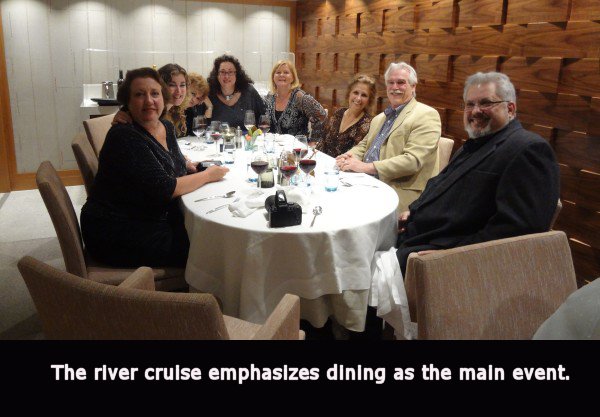
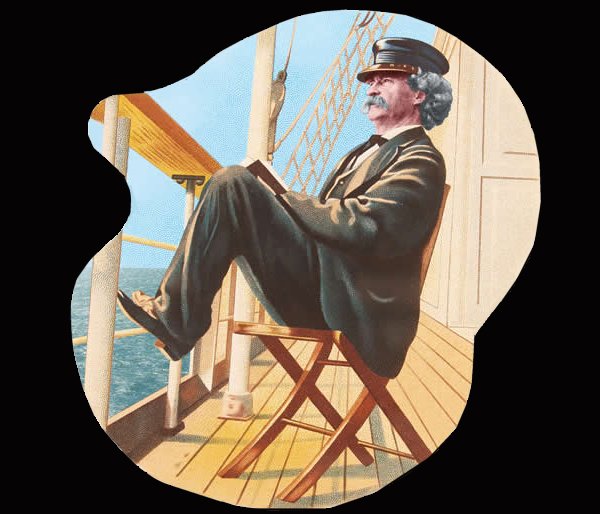
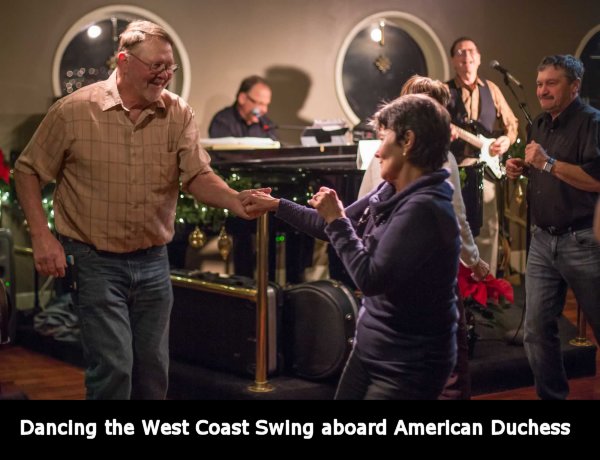
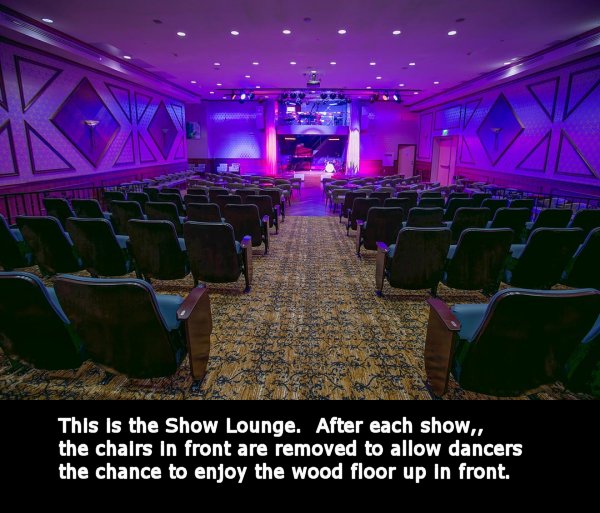
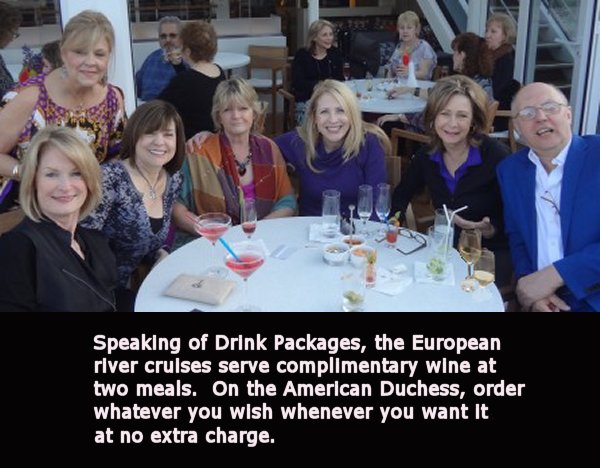

|
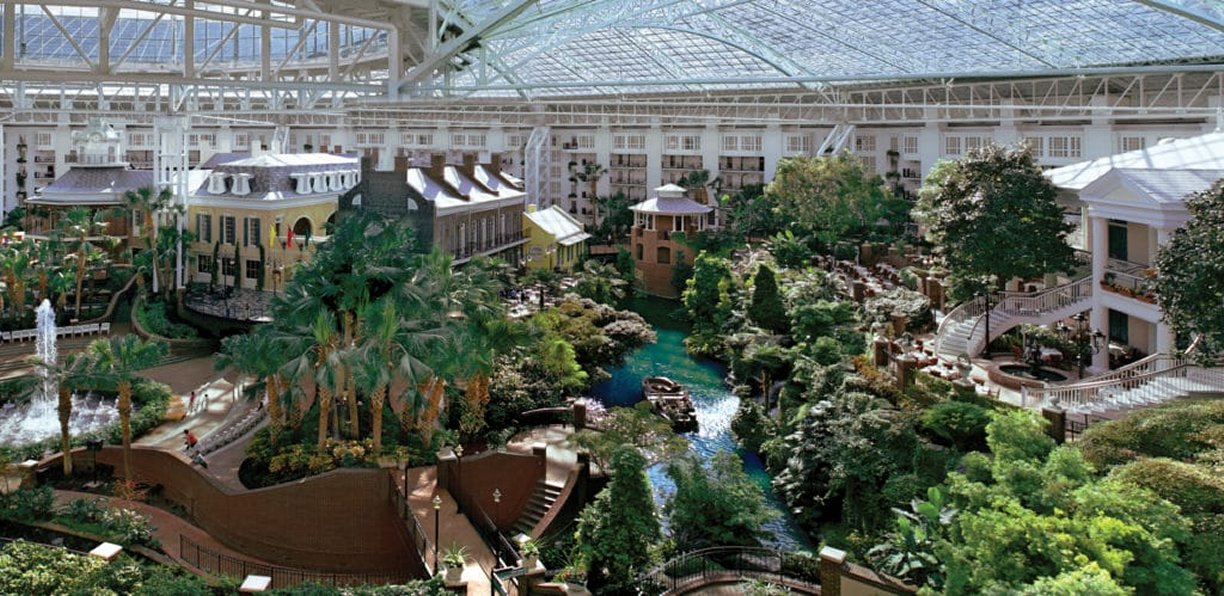
|
DAY ONE:
NASHVILLE, TENNESSEE
|
Day 1: Hotel Stay - Nashville,
Tennessee
So our trip begins with a mystery.
Take a look at this overview using Google Earth. What
do you suppose is hiding under that Astrodome-style roof?
That is a nine acre Rain Forest-Riverwalk!! And do you
think Rick and Marla can't wait to check it out? We
do! In fact, we are going in a day early just to
wander around.
As part of our river cruise package, we will be staying at
the Gaylord Opryland Resort. In case you wish to visit
the Grand Ole Opry, it is a 15-minute walk away. Just
a few blocks.
Enjoy your complimentary stay at the iconic Gaylord Opryland
Resort in Nashville. The evening is yours to get
self-acquainted with all that this legendary "Music City"
has to offer.
The Hospitality Desk will be located in the hotel for your
convenience between 3:00 p.m. and 7:00 p.m. It is here that
the American Duchess staff can assist with everything from
general questions about your upcoming voyage to reserving
Premium Shore Excursions.
An American Queen Steamboat Company representative, as well
as a local representative, will be readily available to
provide you with dining, entertainment, and sight-seeing
suggestions so that you may maximize your time in Nashville.
Rick's Note: I suppose I could write and
write and write, but this time I will let the pictures speak
for themselves.
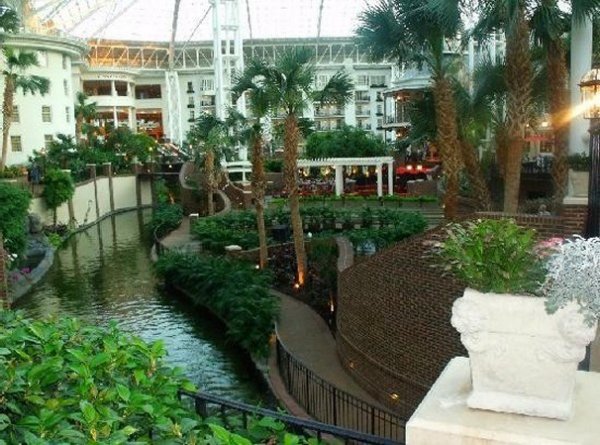 |
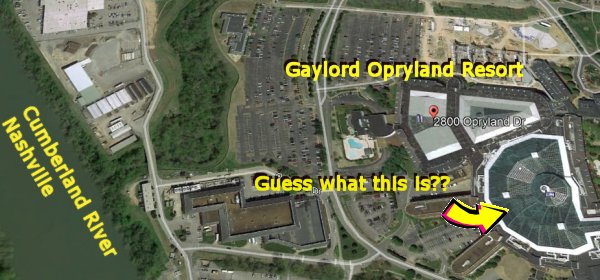

 |
|
DAY TWO: NASHVILLE
AND CLARKSVILLE
|
Day 2: Nashville and Clarksville,
Tennessee
Rick's Note:
Day Two has two purposes. You have the
entire morning to enjoy Nashville. However, sometime
in the early afternoon you will catch a shuttle at the hotel
which will transfer you to a town called Clarksville 40
miles to the northwest.
Here is how it
works.
At some point in the morning you will
visit the American Queen Steamboat Company
Hospitality Desk for ideas about how to spend your day.
The official Voyage Check-In
will be open from 9:00 a.m. to 12:00 p.m. During this
time, representatives will arrange for your transfer to the
vessel and answer any questions you might have. The
process is simple and will have you back to exploring in no
time. If you have any additional questions, the Hospitality
Desk will be at your service until the complimentary vessel
transfers begin.
We are not sure
how long we are allowed to stay in Nashville, but the
soonest you can get on the boat is supposed to be 3 pm.
Once you board
the American Duchess in Clarksville, you will have the
entire late afternoon and evening to do whatever you want.
Relax on the boat or wander around Clarksville.
|
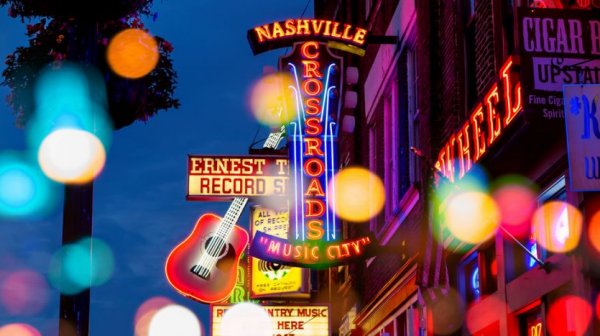 |
|
DAY THREE:
CLARKSVILLE, TENNESSEE
|
Day 3: Clarksville, Tennessee
Clarksville is the
fifth fastest growing city in the United States while
keeping their small town charm. Founded in 1784 and
incorporated as a town in 1785, Clarksville was named for
Revolutionary War hero General George Rogers Clark. The town
is lined with history ranging for centuries and can be seen
through prime examples of Victorian and Roman styles of
architecture that are prevalent throughout the city.
The boat will
depart from Clarksville sometime around 5 pm.
Here are the
included shore excursions you can choose from.
INCLUDED SHORE EXCURSIONS
·
Smith-Trahern Mansion
Built in 1858 by wealthy tobacconist Christopher Smith, this
majestic antebellum home overlooks the Cumberland River.
Constructed during the troubled pre Civil War era, the
architecture reflects Greek Revival and Italianate styles.
The home boasts grand hallways, an exquisite curved
staircase and a “widow’s walk” on the roof. This beautiful
home overlooks the Cumberland River. It was designed by
Adolphus Heiman in 1858 for a wealthy tobacconist by the
name Christopher Smith. The home reflects the transition
between Greek Revival and Italianate styles, which were very
popular at that time. Although not as large as some, the
home boasts grand hallways, an exquisite curved staircase
and a “widow” walk" on the roof. The original main building
consisted of four large rooms on each of the two floors,
opening onto both the hallways and the balconies. The
kitchen was attached to the back of the house, but there was
no connecting door. Of the many outbuildings that must have
been on the property at this time, only the slave's quarters
remains.
·
Montgomery County Courthouse
Originally constructed in the 1800’s, the Courthouse and
Courts Complex is a blend of state of the art technology and
historic charm. Restored after the 1999 tornado, this
architectural beauty is the symbol of Clarksville’s historic
downtown. Adorning the corridors of both buildings are 150
photographs illustrating the history and heritage of
Montgomery County.
·
Customs House Museum and Cultural Center
Built in 1898 as a US Post Office and Customs House for the
flourishing tobacco trade, this architecturally fascinating
structure is among the most photographed buildings in the
region. The state’s second largest general museum, the
center features rotating shows, galleries and a sculpture
garden. This center, located in the center of downtown
Clarksville, is the State’s second largest general museum.
The 1898 portion of the Museum was originally designed for
use as a Federal Post Office and Custom House to handle the
large volume of foreign mail created by the city’s
international tobacco business. It measures 62 feet, 2
inches by 62 feet, 2 inches overall and is built on a smooth
stone foundation. The brick exterior has decorative terra
cotta around all openings and on the corners. The hipped
roof with flared eaves is made of slate over long leaf pine,
with the roof framing being of steel construction. The floor
is of Knoxville, Tennessee marble, and the plastered walls
feature extensive natural white oak trim. The building
contains three vaults. It was placed on the National
Register of Historic Places in 1972. With over 35,000 square
feet of exhibit space, hands-on activities and special
events, this museum can keep everyone busy. Explore the
expansive museum visiting galleries displaying fine art,
science, and history. Enjoy the museum’s collection of model
trains that ride around the tracks each day.
·
Fort Defiance Interpretive Center and Park
in April of 2011, the Fort Defiance Civil War Park opened
its doors to the new interpretive center, kicking off the
150th anniversary of the war that defined a century and
changed the country. Fort Defiance overlooks the Red and
Cumberland Rivers and has a breathtaking view of the
Downtown. Visitors are encouraged to walk the trails and
enjoy the history that the location represents. Displays,
cannons and the occasional re-enactors are just some of
things you can enjoy on your visit to Fort Defiance. In
November 1861, Confederate troops began to build a defensive
fort that would control the river approach to Clarksville.
They mounted three guns in the fort.
On February 19, 1862,
Federal gunboats came up the river from Fort Donelson and
reported the fort displayed a white flag and was deserted.
The Federals took over the fort and enlarged it so that it
would control traffic on the Hopkinsville Pike. Clarksville
was left with a small garrison of Union Troops. In April
1862, this small garrison was made up of the 71st Ohio
Volunteers commanded by Col. Rodney Mason. During July and
August 1862, there was an increase in guerrilla activity
around Clarksville. On August 18, 1862, Clarksville was
recaptured by Confederate Calvary. Union soldiers were sent
from Fort Donelson to retake Clarksville in September 1862.
Battles were fought at New Providence on September 6, 1862
and at Riggins Hill on September 7, 1862. The town and fort
were reoccupied by Federal troops who remained for the rest
of the war. Col. Bruce was placed in command at Clarksville
and Fort Defiance was renamed Fort Bruce.
|
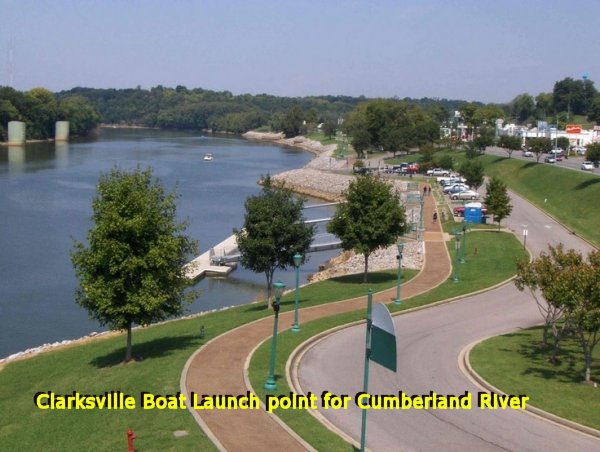
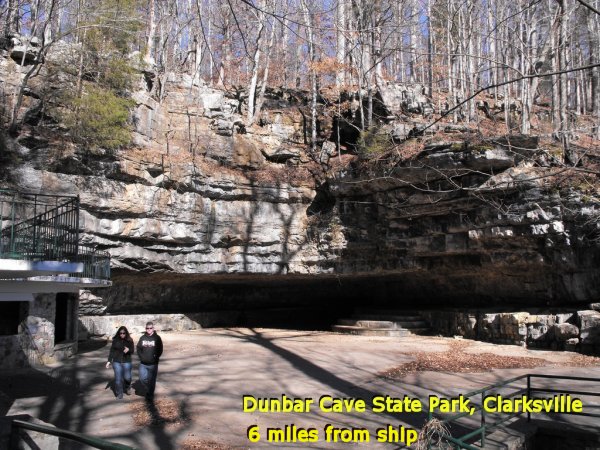
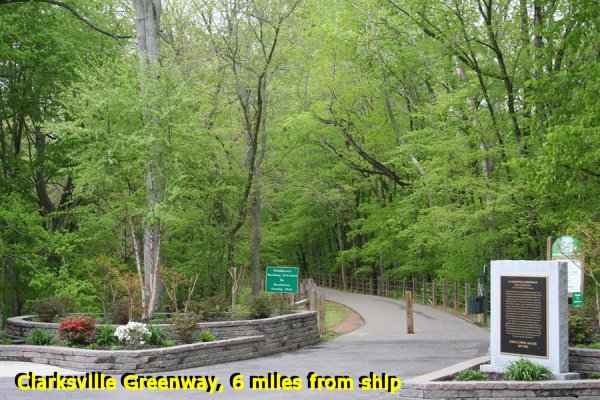
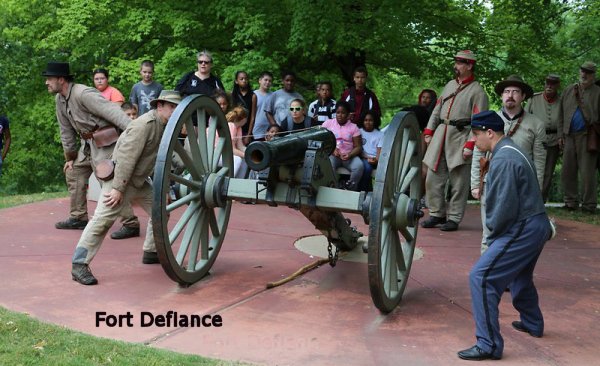 |

|
DAY FOUR:
DOVER, TENNESSEE
|
Day 4: Dover, Tennessee
Stewart County is
a small county enriched with history, picture-perfect scenery, and
welcoming citizens. Guests are greeted with nature's beauty and
wildlife surrounding the city. Located at the county's heart is
Dover, its county seat and the home of Fort Donelson
National Park.
This peaceful,
picturesque town is the location of one of the most historic battles
of the Civil War - a battle that changed the direction of the war
for the North. Today, bald eagles
call this park their home as and soars through the skies; a true
symbol of freedom. Although small and rural, Dover has much to offer
her visitors who can enjoy a delicious meal at one of the many local
restaurants or take in the comforting hometown charm found
throughout the city. Dover and Stewart County are the perfect
gateway to a simple, cozy, quiet, country experience.
·
INCLUDED SHORE EXCURSIONS
·
Fort Donelson
Explore the battlefield where Union and Confederate soldiers fought
in February of 1862. Discover the history of the past displayed
inside the Visitor Center or scattered across the battlefield, where
monuments, plaques, and canyons portray the battle that ultimately
ended with the Union forces capturing Fort Donelson. The
construction of the Fort Donelson started in the year 1861 by Daniel
S. Donelson and was named after him. During the Civil War of the
1860s, the Union forces were heading south to fight the Confederacy.
Fort Donelson was key because of its location on the Cumberland
River. When Fort Donelson was captured by the Union in February
1862, it was their first major victory for the Civil War. With the
fort under Union control, they now had the door open to the
Confederacy, ensuring that Kentucky would stay in the Union and
opening up Tennessee for a Northern advance along the Tennessee and
Cumberland Rivers. At Fort Donelson, visitors can learn about the
battle, view the earthworks and cannons, and take a walk through the
area on one of two trails. There also are areas for picnics,
parking, and strolls along the Cumberland River, as well as a
Visitor Center, where guests can learn the history of the war
leading up to this battle and the events that occurred after it was
finished.
·
Fort Donelson National Cemetery
The Fort Donelson National Cemetery in Dover, Tennessee was
established in 1867 as a burial ground for Union soldiers killed in
a significant early Civil War battle. Today, the cemetery contains
the graves of veterans representing the Spanish-American War, World
Wars I and II, and the wars in Korea and Vietnam. Fort Donelson
National Cemetery is one of 14 national cemeteries managed by the
National Park Service and is a part of the Fort Donelson National
Battlefield. In July 1862, Congress passed legislation giving the
President of the United States the authority to purchase land for
the establishment of cemeteries “for soldiers who shall die in the
service of their country.” The legislation effectively began the
National Cemetery System. In 1863, the Union Army abandoned the
Confederate works and constructed a new fortification on the ground
that became the cemetery site. A freedmen's community developed
around the new Union fort. Four years later, this same site was
selected for the establishment of the Fort Donelson National
Cemetery and 670 Union soldiers were reinterred here. These soldiers
(including 512 unknowns) had been buried on the battlefield, in
local cemeteries, in hospital cemeteries, and in nearby towns. These
totals include five known and nine unknown soldiers from the United
States Colored Troops. In 1867, Fort Donelson Cemetery was
established as the final resting for Union soldiers and sailors
initially buried in the Fort Donelson area. Today the national
cemetery contains both Civil War veterans and veterans who have
served the United States since that time.
·
The Surrender House/Dover Hotel
This 1850s building was originally the Dover Hotel and was a popular
stop for travelers of the time. During the Battle at Fort Donelson,
General Buckner and his staff used the hotel as their headquarters
during the battle. It also served as a Union hospital after the
surrender. After Buckner accepted Grant's surrender terms, the two
generals met here to work out the details. Today, the building is
restored and showcases historical artifacts and galleries. Built
between 1851 and 1853, the Dover Hotel accommodated riverboat
travelers before and after the Civil War. The Dover Hotel was the
site of the "unconditional surrender" of General Buckner to General
Grant, on February 16, 1862. Grant's terms of "unconditional and
immediate surrender" were described by Buckner as "ungenerous and
unchivalrous.” This was the Union Army's first major victory of the
Civil War, setting the stage for invasion of the south and eventual
capture of the Mississippi River Valley. The structure was
originally built in 1851, and still stands in the heart of Dover.
The structure had served as General Buckner's headquarters during
the battle. The Fort Donelson House Historical Association and the
National Park Service restored the house in the 1970s, and today the
exterior looks much as it did at the time of the surrender.
·
Stewart County Visitor Center
Explore the Stewart County Visitor Center to learn about the history
and future of the city of Dover. Walk through the Gallery located
inside to get a visual representation of the city’s culture and
history or talk to a resident at the Visitor Information Desk to
hear their own piece of Dover history! Stewart County proudly opened
its Visitor Center in October 2010. It has been a beautiful addition
to the county and serves the community on multiple facets. The
Center includes a Visitor Information Desk, where guests can
discover the history of the county, hear about how the city is
changing and improving through future plans, and even get tips on
the best local eateries and stores. Take a tour through the Gallery,
where the history and culture of Stewart County is highlighted
through interesting articles, incredible art pieces, and rare
artifacts, and then relax in the comfort of the fireplace.
·
Stewart County Historical Society Museum
This historical building showcases the history, culture, and customs
of the city of Dover. Guests can explore many displays of local art,
artifacts, and photographs as local experts recount the stories of
this historical county. The museum houses an abundant collection of
rich information on the county’s history, culture, and customs.
While visiting the Historical Society Museum, guests have the
opportunity to explore the county’s one-room schoolhouse and the
history found inside, the beautiful Stewart County quilt showcased
for all to see, and many more displays that demonstrate the local
history. The building is also used to host many local events from
charity dinners and dancing nights to educational seminars and
talent shows, the Stewart County Historical Society Museum works
hard to bring the community together.
|
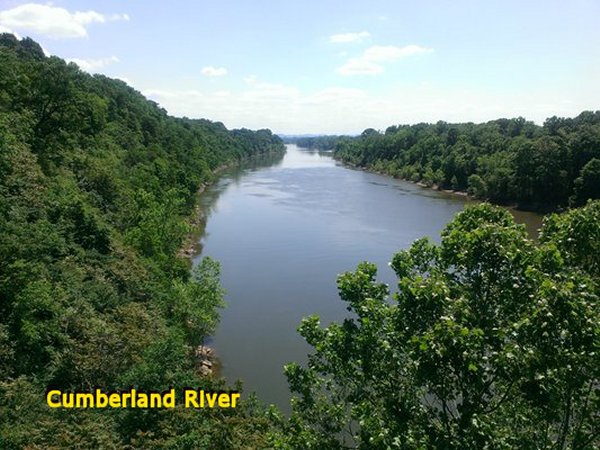
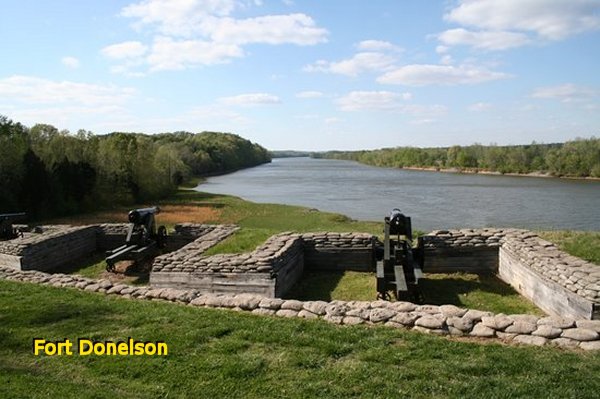
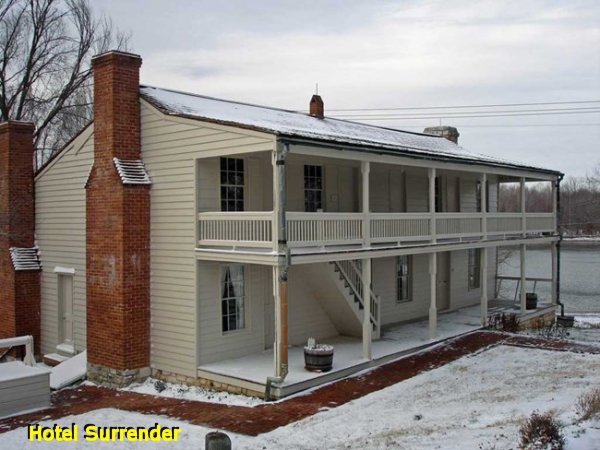
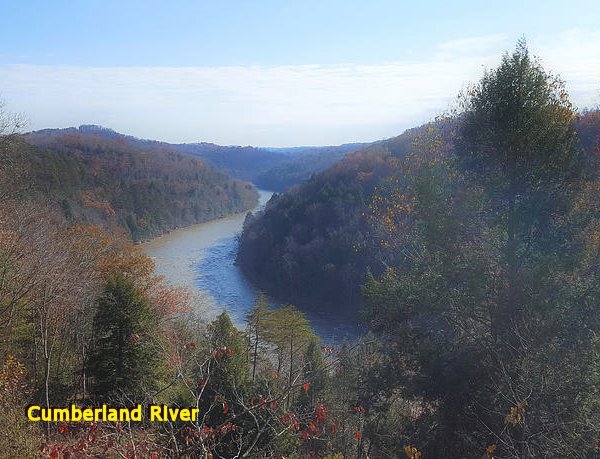
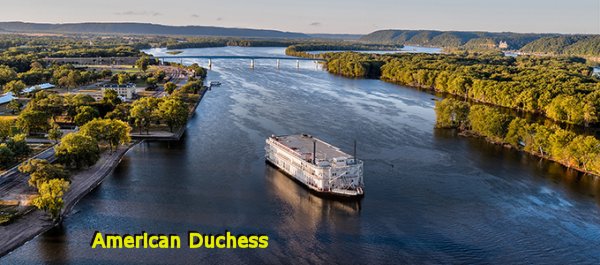
|
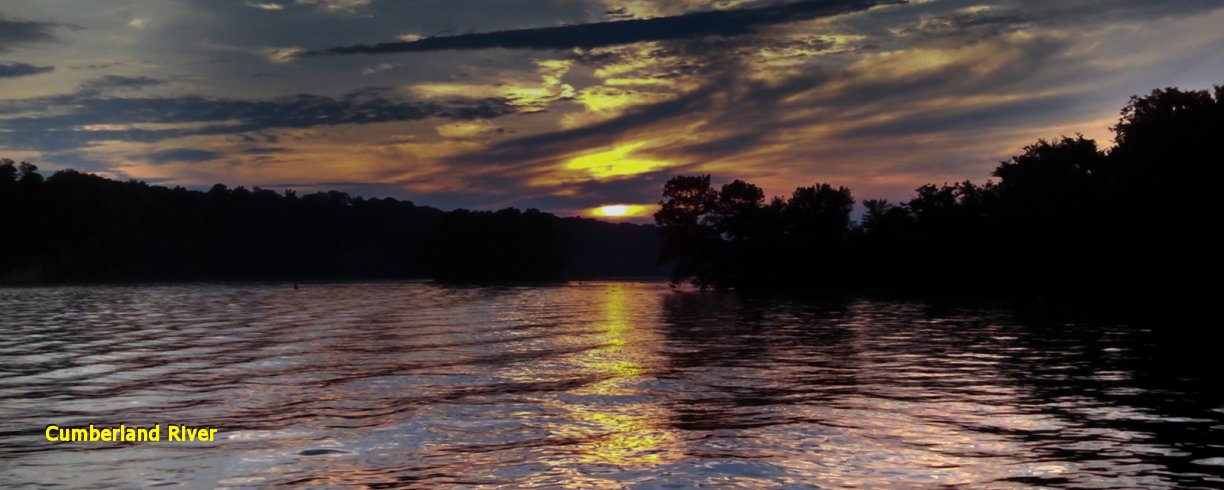
|
THE LAND
BETWEEN THE LAKES
Sometime
on Day Four, possibly in the evening after our visit
to Dover, Tennessee, we have beautiful treat in
store when we pass by The Land Between the
Lakes.
Starting
at Dover, Tennessee, there is a 50 mile stretch
where the Tennessee River and the
Cumberland River run side by side in
their path north to the Ohio River. The two
rivers are only seven miles apart.
About 12
miles north of Dover is the Kentucky-Tennessee State
Line. Consequently most of the 'Land
Between the Lakes' lies in Kentucky.
|
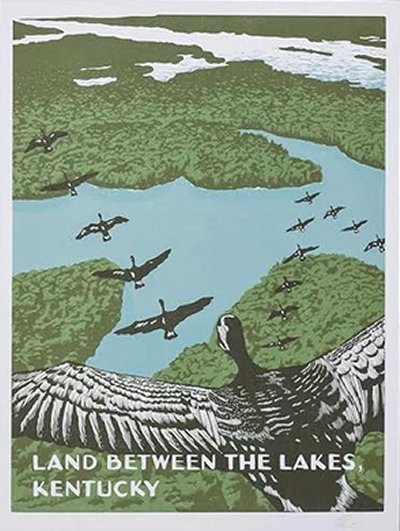 |
There used to be
sparse population in this neck of the woods. Heavily
forested, this rugged area has long been isolated from any
large cities. More than likely in olden times this was
serious 'Moonshine Country', a sort of no man's land
where the law had the sense to leave the Hatfields and
McCoys alone.
However, at this
point, there is very little population in the area. The former residents were kicked out in
order to create two giant reservoirs. The first dam
was built on the Tennessee River in 1944. This dam
created Lake Kentucky, but did not affect the Cumberland
River. The second dam was built on the Cumberland
River in the Sixties. This created Lake Barkley.
A small one mile wide canal was cut at a town known as Grand
Rivers to allow the two adjacent lakes to be accessed by
water.
As one might
gather, many farmers lost their lands under the giant lakes
and were forced to relocate. The area residents
deeply resented the condemnation of their lands, but there
was not much they could do about it. Today the
abandoned area is a national park under the control of the
US Forest Service.
My guess is our
chance to see the undisturbed coastline of the 'Land Between
the Lakes' will be a visual delight.
In addition, we
will get the chance to see a lock in action when we reach
the northern part of Lake Kentucky on our way to Paducah.
If you have never seen a lock in operation before, it is
very interesting to watch how it works.
|
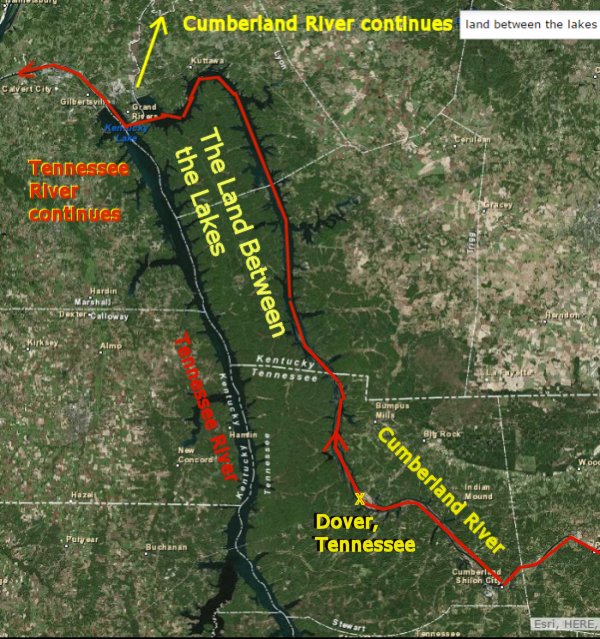 |
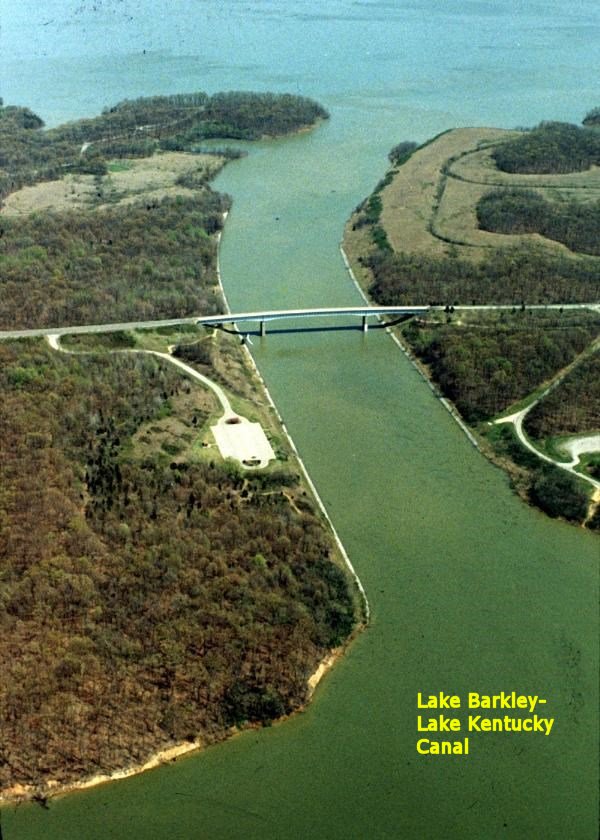 |
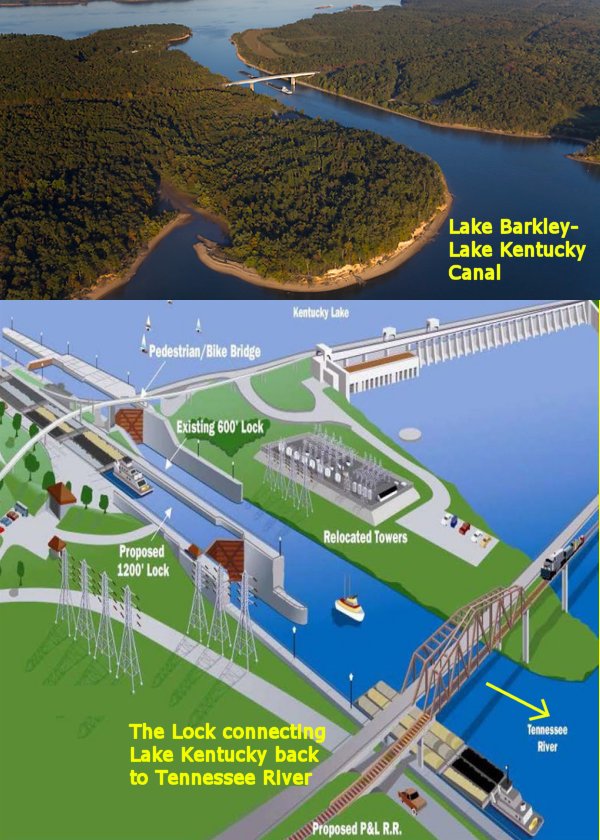 |
|
DAY FIVE: PADUCAH,
KENTUCKY
|
Day 5: Paducah, Kentucky
Paducah embraces
their harmonious history between the European settlers and
the Padoucca Indians native to the area. The city is located
at the confluence of the Ohio and the Tennessee Rivers.
Because of this, Paducah is
called the 'Four-Rivers Area'
due to the proximity of the Ohio,
Cumberland, Tennessee, and
Mississippi Rivers.
This prime
location has played a major role in Paducah’s history, as
transportation was easily accessible – the economy was
strong and travelers were frequent!
·
INCLUDED SHORE EXCURSIONS
·
National Quilt Museum
Celebrating 25 years in 2016, The National Quilt Museum is
the largest of its kind in the world. It is the portal to
the contemporary quilt experience - exhibits and workshops
by renowned quilters who are implementing creative
approaches to fiber art. The 27,000-square-foot contemporary
structure features three galleries highlighting a collection
of contemporary quilts and changing thematic exhibitions
that celebrate the talent and diversity of the global
quilting community. Workshops taught by world-class fiber
art instructors are offered year-round. The Museum Shop &
Book Store offers Kentucky Crafted items and quilt-related
instructional and collector books.
·
Lloyd Tilghman House
This historic Greek Revival house was built in 1852 for
Lloyd Tilghman, a new member of Paducah’s community at the
time. After the house was completed, Tilghman did not
purchase the property. Instead, the builder, Robert Woolfolk
became the sole owner of the house and grounds. Tilghman,
his wife, their seven children, and five slaves resided in
the home until 1861. It was then that Woolfolk and his
family moved into the home. Their family was pro-South and
proudly flew a Confederate flag causing much uproar in the
community and with the Federal Troops who located their
headquarters just across the street from the home.
Eventually Woolfolk and his family were banished from
Paducah and the United States, forced to live in Canada on
August 1, 1864.
·
Paducah Railroad Museum
The original Freight House (across the parking lot from the
Museum) was built in 1925 by the Nashville, Chattanooga, and
St. Louis Railway. In 1996, the Freight House was sold and
the Museum moved to a building one-half block away. Here,
learn the history of the railroad and those who used it,
explore the authentic train models, and enjoy the
memorabilia showcased for guests.
·
River Discovery Center
In 1988 Mayor Gerry Montgomery and her committee pursued the
development of a museum to showcase the Four Rivers Region’s
maritime heritage. The River Heritage Center was planned in
1992 as the very beginning stages of the mayor’s dream.
Years later the museum was relocated by Seamen’s Church
Institute of New York and renamed the River Heritage Museum
before finally receiving its current name, the River
Discovery Center in 2008. Here explore artifacts, exhibits,
and interactive displays that share the history of marine
life and the history of the river.
·
The Moonshine Company
Explore, taste, and purchase traditional and international
award-winning Kentucky moonshine and moonshine flavors at
The Moonshine Company in historic downtown Paducah. Located
only blocks from the confluence of the Ohio and Tennessee
Rivers, The Moonshine Company offers complimentary guided
museum tours and moonshine samples that are distilled
on-site in our 108-year-old building. Get a glimpse into the
rich Kentucky moonshine history with their collection of
historic moonshine stills and purchase that same moonshine
secretly produced and bootlegged by our family over 80 years
ago to bring home with you!
The Paducah Song
-- Benny Goodman,
Carmen Miranda
If you could see a certain town down south
I'll bet you fifteen cents you'd holler "Shut my mouth!"I'm
not exaggeratin' when I say
There's not a sweeter town in the U.S.A.
I know an awful lot of people claim
It has a funny name. But brother just the same
They can't frown on my home town
Paducah, Paducah,
If you wanna you can rhyme it with bazooka
But you can't pooh-pooh
Paducah,
That's another name for Paradise.
Paducah, Paducah,
Just a pretty little city in Kentucky
|
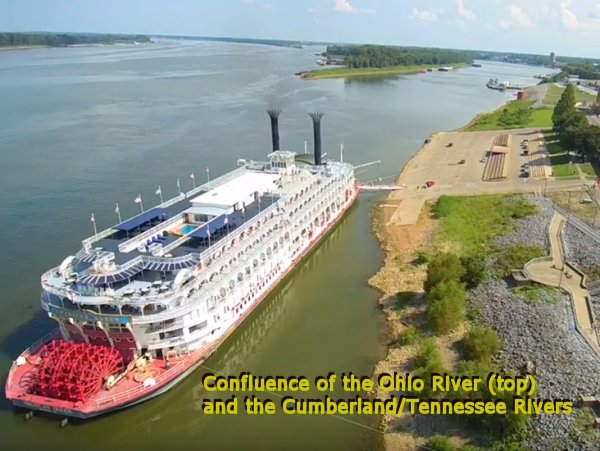
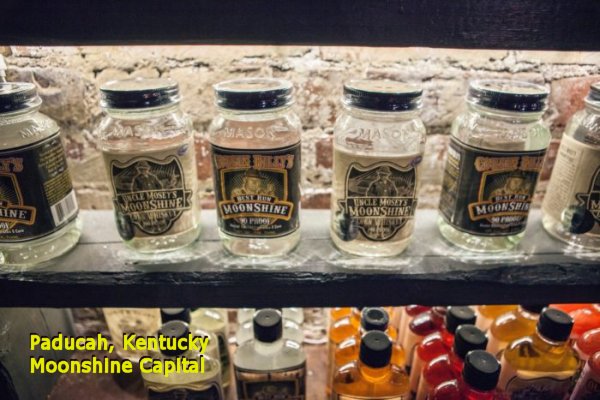
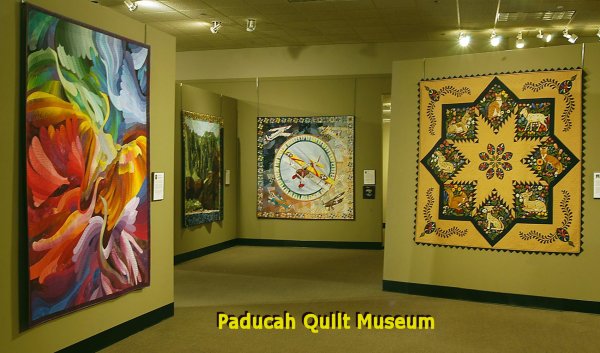
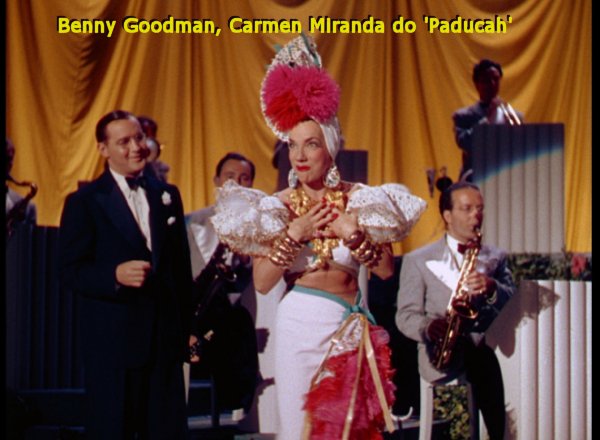 |

|
DAY SIX:
CAPE GIRARDEAU, MISSOURI
|
Day 6: Cape Girardeau, Missouri
Nestled along the
western banks of the mighty Mississippi River lies the city
of Cape Girardeau, Missouri. It’s
a community rich in history and heritage. For more than 250
years, people have been drawn to Cape Girardeau and the
river on which it lies. Stroll along the riverfront, where
the passion that led Mark Twain to write so eloquently about
Cape Girardeau in Life on the Mississippi, the inspiration
that Gen. Ulysses S. Grant used to lead with firm conviction
as he took command of the Union Army in the historic
downtown, and the warmth and hospitality that community
founder Louis Lorimier extended to Lewis and Clark while on
the journey of a lifetime as they set forth on their Corps
of Discovery to explore the Louisiana Purchase will be
prominent.
·
Mississippi River Tales Murals
The Mississippi River Tales Mural is the largest and most
dramatic of Cape Girardeau’s murals and is located on a
portion of the downtown floodwall. Covering nearly 18,000
square feet, this 1,100-foot-long mural features 24
historically-themed panels that vividly portray Cape
Girardeau’s rich history and heritage; descriptive markers
provide an explanation of each panel. The Missouri Wall of
Fame Mural features 47 individuals who were born in Missouri
or achieved fame while living in the state.
·
Red House Interpretive Center
The Center commemorates the life of community founder
French-Canadian, Louis Lorimier, as well as the visit of
Meriwether Lewis and William Clark in November, 1803. The
Interpretive Center houses an early 1800s exhibit that
reflects the lives of the early settlers of the old Cape
Girardeau district. In addition, a rendering of Lorimier’s
Trading Post displays authentic items that would have been
sold at the turn of the 19th century. The gardens on the
north side of the house show the types of garden you might
have seen in 1803 with flowers, vegetables, cooking herbs,
and medicinal herbs.
·
Old St. Vincent’s Church
The Renaissance architecture, referred to as English Gothic
Revival style, is not only beautiful but also extremely
rare, as very few churches of this style exist in America
today. Explore the many artifacts preserved in the church as
you admire the arches and woodwork lining the interior of
the chapel. Discover this fully restored beauty as it
transports you back in time.
·
Glenn House
Completed in 1883, the Glenn house is a fully restored
historic museum in Cape Girardeau, Missouri. It is a prime
example of the Victorian period lifestyle including the
architecture, furnishings, clothing, and décor. The Glenn
House was built for David A. Glenn, who was an influential
figure in the city’s history. He and his family occupied the
home until 1915. Before they vacated the home, it was
renovated in 1900 to the Queen Anne Style. The house is
listed on the National Register of Historical Places. Many
of the furnishings and features of the home have been
restored to their original beauty and have been kept
authentic to the Victorian time interior.
·
Holland School of Visual and Performing Arts River Campus
Earl and Margie Holland School of Visual and Performing Arts
is composed of departments covering the history and science
of art, music, theater, and dance. Visit the beautiful
campus and explore the unique styles and subjects taught
here. Walk around and discover impressive pieces of art, in
many different styles, showcasing the talent and hard work
of local students.
·
Crisp Museum
The Crisp Museum collects in three thematic areas:
archaeology, history, and fine art. The Archaeology
collection has several collections of prehistoric Native
American artifacts, which illustrate aspects of the daily
and ceremonial lives of the indigenous peoples who lived in
southeastern Missouri from 13,500 B.C. to 1400 A.D.,
highlighting some very rare and exotic artifacts. The
museum’s historical collections cover a wide range of
artifacts with strengths in the areas of militaria, firearms
and their accessories, clothing, and hand tools.
·
Cape River Heritage Museum
Since its founding in 1981, the Cape River Heritage Museum
has focused on local history while preserving a historic
building at the corner of Frederick and Independence
streets. Located in an old fire house, the museum offers
events, tours, and exhibits on steamboats, education,
commerce, Mark Twain Memorial, the
Missouri mule, the state flag, the Show-Me slogan, Native
American culture, and fire and police memorabilia. Snap a
picture of yourself in the model steamboat or in the cab of
a tall-ladder fire truck from the 1950s!
|
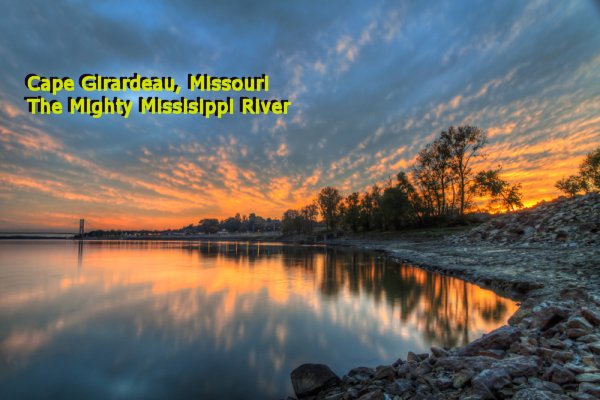
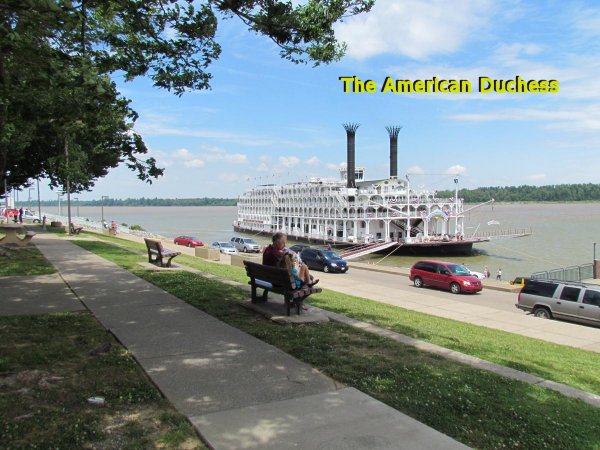
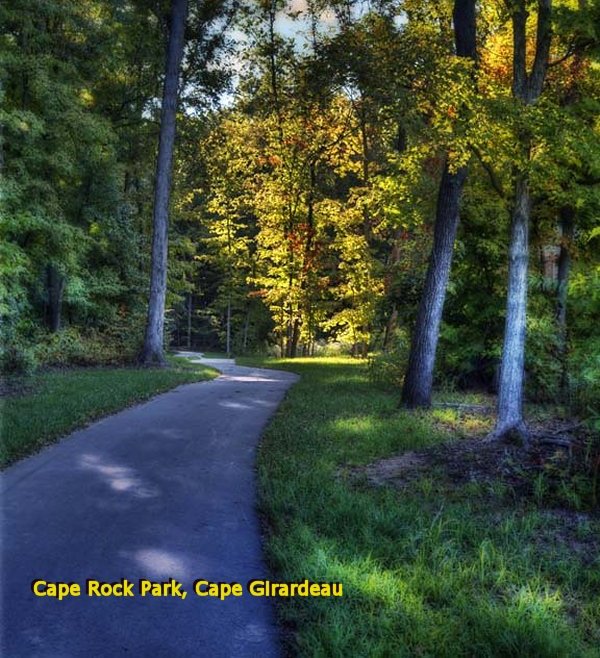 |
Day 7: New Madrid, Missouri
New Madrid was
founded in 1776 by Spanish Governor Esteban Rodríguez Miró
who welcomed Anglo-Saxon settlers but required them to
become citizens of Spain and live under the guidance of his
appointed impresario, Revolutionary War veteran, Colonel
William Morgan of New Jersey. Some 2,000 settled in the
region. In 1800, Spain traded the territory to France in the
Third Treaty of San Ildefonso, who promptly sold it to the
United States in the Louisiana Purchase.
The city is
remembered as being the nearby location for the Mississippi
River military engagement, the Battle of Island Number Ten,
during the Civil War. The city is famous for being the site
of a series of over 1,000 earthquakes in 1811 and 1812,
caused by what is called the New Madrid Seismic Zone.
Today,
explore this quaint river town that will surely steal the
hearts of all guests. (Guard your
heart everybody!)
·
INCLUDED SHORE EXCURSIon
·
New Madrid Observation Deck
Stroll off the American
Queen and over to the New Madrid Observation
Deck. Jutting out across the Mighty Mississippi, guests can
get a picture-perfect view of the river.
·
New Madrid Historical Museum
Located on the Mississippi River in the building that was
once the Kendall Saloon; the New Madrid Historical Museum
reflects the history of New Madrid from as far back as the
Native Americans to present-day. Learn about the active New
Madrid fault and how it has made an impact on this river
town and shop the gift shop for unique treasures to remind
you of your trip to New Madrid. Located in the former
Kendall Saloon off of Main Street, the New Madrid Historical
Museum shares the history of this river town from the
Mississippian period through the 20th century. Here, guests
can explore the great earthquakes of 1811 and 1812,
documented with seismographic recordings, Native American
artifacts, Civil War artifacts, early family life in the
city of New Madrid during the 19th and 20th centuries, and
the gift shop!
·
Hunter-Dawson State Historic Site
The Hunter-Dawson State Historic Site was created to
preserve a time of the past. Guests can explore the Bootheel
Mansion and learn about the history of the era. Tour this
15-room estate turned museum built in 1860 by William and
Amanda Hunter, local store owners. Guests can view the
entire historic home and enjoy the beauty of a time gone by.
With most of the original furniture still intact this
location is a uniquely preserved relic from the late 1880s.
Hunter-Dawson State Historic Site preserves a now-vanished
part of Missouri: The stately Bootheel mansion. Filled with
original pieces and furnished in the style it was in during
its heydays of the 1860s-1880s, the ornate mansion provides
a history lesson in every corner. Most of the original
furnishing purchased by Amanda Hunter, the house's first
owner (with her husband William) is still in the house.
·
Higgerson School
This one room school house provides guests with a glimpse
into the life of a student attending this historic school.
Guests can learn about this 1948 school house and how its
practices proved to be essential cornerstones of America’s
early 19th century education system. Restored to the
one-room school that operated at Higgerson Landing in 1948,
the Higgerson School is a window to the educational
practices that shaped and served rural America from the
early 19th century. Experience the typical school day of
children attending all eight grades in one room with one
teacher. Relive the days of playing "Wolf Over and River"
and “Caterpillars," a trip to the outdoor facility and
crossing the fence on the stile. Visit Higgerson Landing
Gift Shop before heading to your next stop.
·
Hart-Stepp House Art Gallery
Stop here to tour the oldest house in New Madrid. Currently
owned by the New Madrid Historical Museum, the house was
built by Abraham Augustine and moved to its current location
in an effort to escape the rising rivers of the Mississippi.
Today, the Hart-Stepp House is home to an extensive
photography and painting collection. The oldest house in New
Madrid, owned by the New Madrid Historical Museum, was built
by Abraham Augustine and moved to its present location in
order to escape the encroaching waters of the Mississippi
River is now home to the newest attraction to the community,
the Hart-Stepp House Art Gallery. The house is used often as
a place to offer workshops and classes. Plans for the future
include a photo studio and the establishment of a
photography club for area school students.
·
New Madrid County Courthouse
In 1812 New Madrid was a vast county extending south through
much of Arkansas. The area was cut roughly in half during
the following year, and even further reductions came by
1816. New Madrid County, located by the Mississippi, was one
of Missouri’s earliest counties. The town of New Madrid was
founded in 1783, and the county was organized in 1812. First
courts met in New Madrid, but county records previous to
1816 are missing. After the devastating earthquake of 1811
and repeated flooding of the Mississippi, the court chose an
inland site for the county seat. For the 20th century
courthouse, New Madrid County purchased a new site north of
the original town in March 1915. From architects who
presented plans, the court selected those from H. G. Clymer
of St. Louis. Clymer's plan was for a brick building 107 by
75 feet with stone trim. Additional funds for finishing the
courthouse and jail were authorized early in 1917, but no
bids were received. World War I was beginning, and the labor
force was reduced. Finally, W. W. Taylor, a master builder
from Cape Girardeau, superintended final interior work,
which was completed in January 1919. Final costs exceeded
$100,000. This courthouse continues in use as New Madrid's
seat of justice.
|
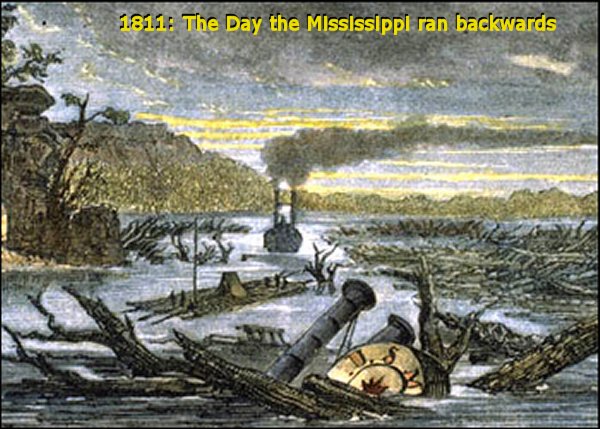
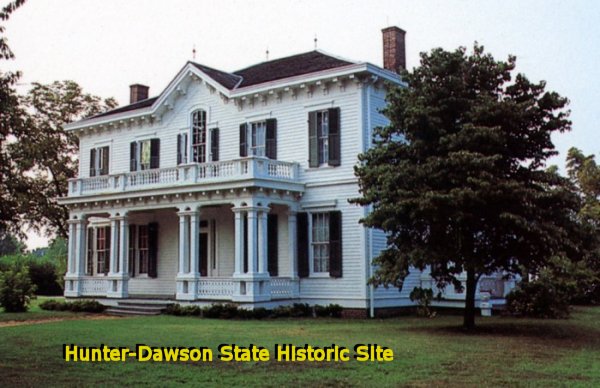
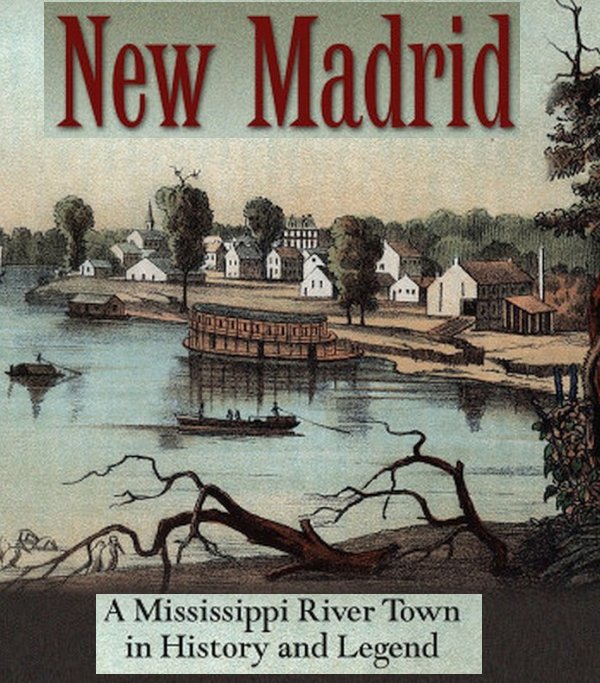 |
|
DAY EIGHT: ROLLIN'
DOWN THE RIVER
|
Day 8: Rollin' Down the Mighty
Mississippi
American Duchess Copy:
There is always
plenty to do between dawn and dusk on the river and today is
the perfect day to enjoy the activities that are available
to you onboard. Gaze at the
beautiful landscapes and small river towns as you mingle
with fellow guests and discuss the unique aspects of river
life.
Rick
Archer's Note: May I suggest a visit to the bar?
|
 |
|
DAY NINE: MEMPHIS,
TENNESSEE
|
Day 9: Memphis, Tennessee
Arrival 8:00 AM
Rick Archer's Note:
Once the riverboat drops you off, you have the
choice to be on your own if you wish. If you prefer
the ship offers a Post-Cruise Hotel Transfer and guided tour
for $139.
Experience the city that "The King" called home on a
guided journey through Memphis! Put on your blue suede
shoes and board the luxury river coach as it departs
toward Memphis' heart and soul - Beale Street! Here, we
will walk the most famous street in Memphis as our local
guide leads us through the vibrant city he calls home.
The journey continues with Beale Street in our rearview
and the home of "The King" himself ahead, Graceland!
An interactive audio tour will guide us through the
mansion before we enjoy free time to explore the
recently opened Entertainment Complex. Experience the
life and legacy of Elvis before departing for the
Post-Cruise Hotel.
There is a lot to see in
Memphis, so some people may wish to see Memphis on their
own. Marla and I are in no hurry to head home.
We plan to stay an extra day or two and visit this legendary
Music capital. If you choose to do things on your own,
here are some of the highlights.
Graceland
There’s
something for everyone at Graceland.
You’ve heard the music, now see the place Elvis
called home. Explore the beautiful mansion, made fit for
The King, walk the gardens where he found peace. Tour the
aircraft that he traveled on from show to show. Encounter
Elvis Presley’s Memphis entertainment complex for an
unforgettable experience featuring legendary costumes,
artifacts and personal mementos from Elvis and his family.
Graceland is so much more than a Mansion. It was the
private retreat of The King of Rock 'n Roll. It was where
his family grew up, spent their time together and enjoyed
life. Explore Elvis Presley’s home and immerse yourself in
his life and legacy. In addition to the Mansion, Graceland
offers several exhibits that feature honors, accolades,
personal items, and historical exhibits that pay tribute to
Elvis and his legacy. A trip
to Graceland is to experience the life of Elvis, celebrate
his achievements, and witness the glory of all things The
King.
Other elvis-related POSSIBILITIES
·
ELVIS PRESLEY'S MEMPHIS
·
ELVIS: THE ENTERTAINER CAREER MUSEUM
·
PRESLEY MOTORS AUTOMOBILE MUSEUM
·
ELVIS DISCOVERY EXHIBITS
·
HOLLYWOOD BACKLOT – NEW
·
PRESLEY MOTORCYCLES
Beale
Street—Home of the Blues!
Beale Street’s heyday was in the
roaring 20′s, when it took on a carnival atmosphere. The
booming nightclubs, theaters, restaurants, stores, pawnshops
and hot music thrived alongside gambling, drinking,
prostitution, murder and voodoo.
In the early evenings,
boxback suits and Stetson hats mingled with overalls.
Young ladies sashayed down
Beale Street and inside the bars, gamblers waited for an
easy mark to stroll in. If the mark escaped from the dice or
the cards, maybe he would fall victim to Little Ora – always
ready to prove her reputation as the best pickpocket between
New Orleans and St. Louis. Maybe he’d just stop over at
PeeWee’s and visit with the musicians, play a little pool,
or secure the voodoo protection of Mary the Wonder.
By mid-evening, the street
would be packed. A one block walk could mean a detour around
the medicine show set up in a little hole in the wall, as
much as stopping and listening to the wandering bluesmen
playing for pennies and nickels.
One club, The Monarch, was
known as The Castle of Missing Men due to the fact that
gunshot victims and dead gamblers could be easily disposed
of at the undertaker sharing their back alley.
Machine Gun Kelly peddled
bottled whiskey from a clothes basket back before moving
into the ranks of big-time crime. Numerous gamblers set a
box next to the card table and slid a share of the take into
it for the church down the street.
There were big vaudeville
shows at the Palace and the Daisy, hot snoot sandwiches at
the corner café, Memphis jug bands playing down at the park,
and one block over on Gayoso, the red-light district rivaled
New Orleans’ Storyville.
Today Beale Street is one of the
most iconic streets in
America. Three blocks of nightclubs, restaurants and shops
in the heart of downtown Memphis. The Beale
Street Entertainment District is a melting pot of delta
blues, jazz, rock 'n' roll, R&B and gospel saluting the
likes of Elvis Presley, B.B. King, Johnny Cash, Jerry Lee
Lewis, Otis Redding, Isaac Hayes, Al Green, Justin
Timberlake and so many others.
Stax
Museum
Located in Memphis’ Soulsville USA neighborhood in the
former Stax Records—which had also been the old Capitol
Theater and closed due to bankruptcy in 1975—the Stax Museum
of American Soul Music is a recreation of what once was.
After the original studio was torn down in 1989, there was a
revitalization effort for the area and the institution was
rebuilt to its former glory.
Today visitors can peruse over 2,000 photos, films, music
clips, costumes, original instruments, artifacts, trivia
games and exhibits that tell the story of Stax Records and
Memphis music history.
You’ll learn about Otis Redding, Isaac Hayes, Ike & Tina
Turner, Aretha Franklin, Ray Charles and other soul legends.
The Stax Museum of American Soul Music is one of only a very
few soul-focused museums in existence anywhere in the world.
Some collection highlights include the dance floor from Soul
Train, Isaac Hayes’ flashy gold and blue Cadillac El Dorado,
a historical film on Stax Records you watch at the beginning
of your visit, Studio A, Tina Turner’s gold sequined dress,
a brown suede jacket owned by Otis Redding, the Hall of
Records with its showcase of 900+ singles and nearly 300
full length albums, and a recreation of the Stax Records
Control Room.
Don’t leave without perusing their gift shop for soul music
inspired t-shirts, DVDs, CDs and memorabilia. Best of all,
each purchase helps benefit the museum as well as the next
door Stax Music Academy, which provides music education and
arts opportunities to at-risk youth. Allow about two to
three hours to explore the museum.
Sun
Studio
It has been
said that "If music was a religion, then Memphis would be
Jerusalem and Sun
Studio its
most holy shrine."
In 1954, an
unknown Elvis Presley, grabbed a mic and sang his heart out
making Sun the most famous recording studio in the world.
Take a guided tour through the birthplace of rock 'n' roll
where you will experience outtakes from recording sessions,
touch Elvis' first microphone and hear the real story of the
studio that launched the careers of not only Elvis Presley,
but Johnny Cash, Jerry
Lee Lewis,
Carl Perkins, B.B. King, Roy Orbison, Charlie Rich, and many
others that signed with the Sun label.
Sam Phillips
opened Sun Studio in 1950 with the goal of capturing the
pure, raw energy of Beale Street. It produced the first rock
'n' roll single: Jackie Brenston and His Delta Cats' version
of "Rocket 88" in 1951 and continues as an active recording
business for many notable artists including U2, Def Leppard,
Tom Petty, John Mellencamp, Paul Simon, Margo Price and many
more.
Tours are
given at the bottom half of every hour. While you're
waiting, enjoy an old fashioned soda in the café or browse
their incredible gift shop for Sun recordings, books,
concert posters and other Sun memorabilia. For your
convenience, there is a free shuttle to and from Graceland,
the Rock 'n' Soul Museum and Sun Studio.
Memphis
Rock N' Soul Museum
The Memphis Rock ‘n’
Soul Museum is a music museum located at 191 Beale Street.
The museum tells the critical story of the musical pioneers
who overcame racial and socio-economic obstacles to create
the music that changed the cultural complexion of the world.
The museum offers a comprehensive Memphis music experience
beginning with the rural field hollers and porch music of
the sharecroppers in the 30s highlighting the urban
influences of Beale Street in the 1940s, radio, Sun Records
and Sam Phillips in the 1950s, the heyday of Stax, Hi
Records and soul music in the 1960s and 1970s, the impact of
the civil rights movement, and the music’s influence and
inspiration that continues today.
|
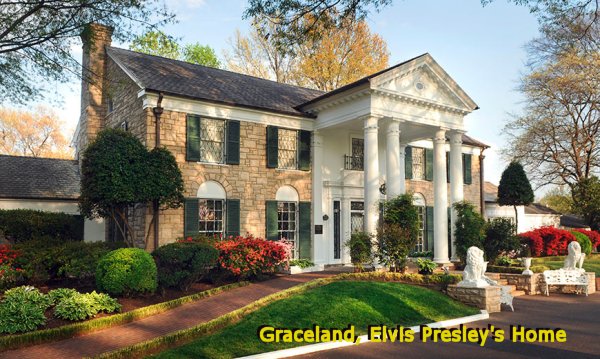
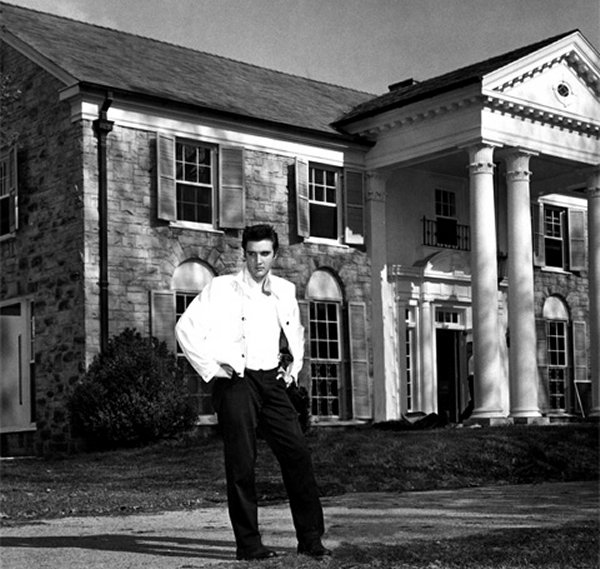
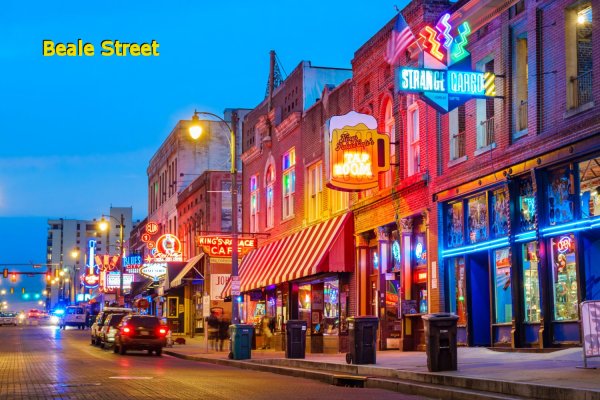
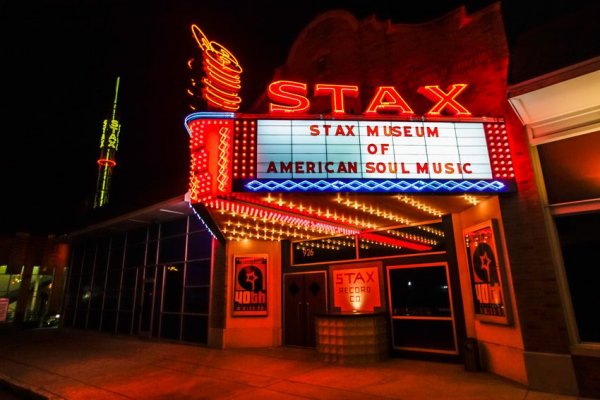
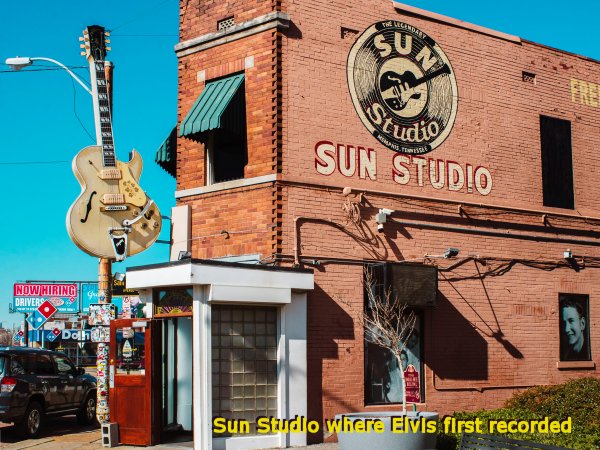
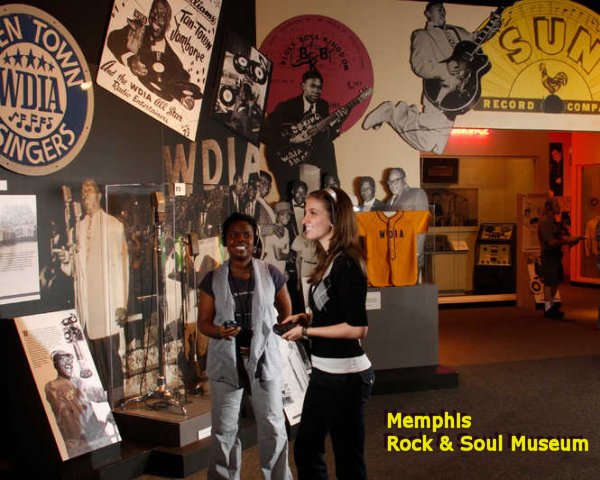 |
|
A FINAL LOOK AT
THE
AMERICAN DUCHESS MUSIC CRUISE
|
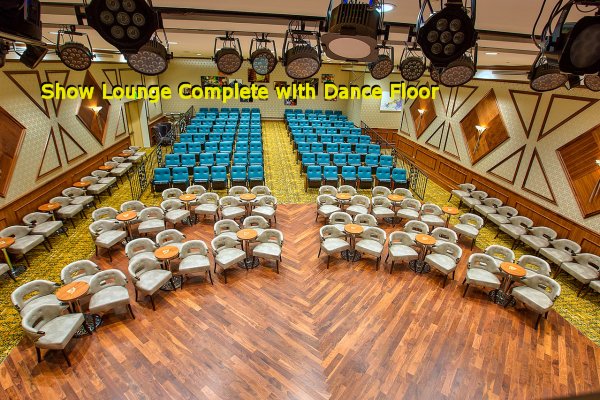 |
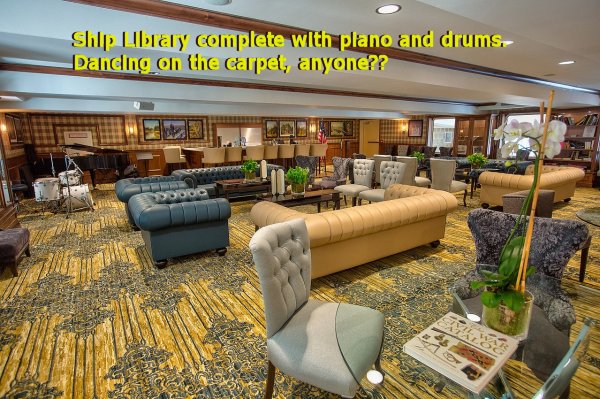 |
Rick Archer's Note:
Marla and I have never been on a river cruise
here in America, so in some ways we are learning at the same
time as our guests what to expect.
At first glance, it
strikes me that a cruise on the American Duchess
is an interesting blend of the European River Cruise
experience with Ocean Cruise-style nightly entertainment.
There seems to be plenty
of room for us to dance if we wish to. And the chance
to hear different styles of music each night is very
intriguing. When one combines the entertainment
with the opportunity to see America the Beautiful from the
luxury of this lovely ship, this river cruise strikes me as
well worth the gamble.
Our band of 28 will
travel the same waterways our forefathers once used to
traverse the wilderness. Granted we aren't Hiawatha in
a canoe or Huck Finn on his raft,
but the scenery is still pretty much the same in many of the
locations we will be visiting. With a little
imagination, maybe we can see ourselves as Davy Crockett
dodging arrows on the Tennessee River.
Yes, this is an expensive
trip, but when compared to the price of our European
trips, it almost seems like a bargain. Gone are the
long and quite costly trips across the Atlantic. Gone
are the $500 drink packages. Gone is the need to change dollars into
local currency. Hey, guys, we are right at home!
Let's do something different and travel America for a
change.
Rick Archer
November 2019

|
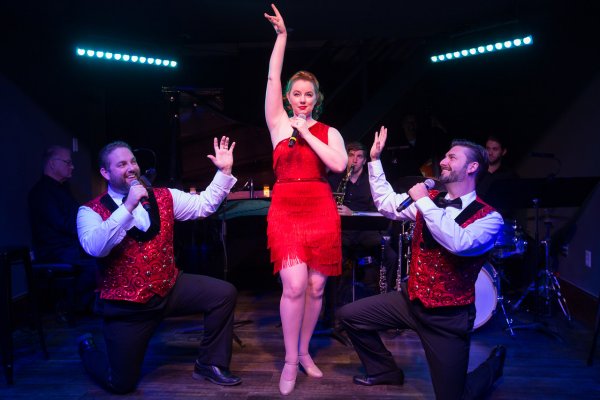

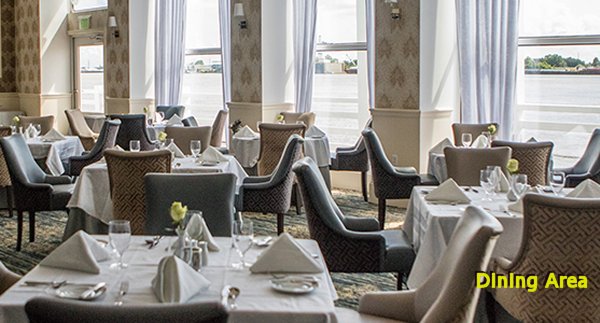 |
|
|